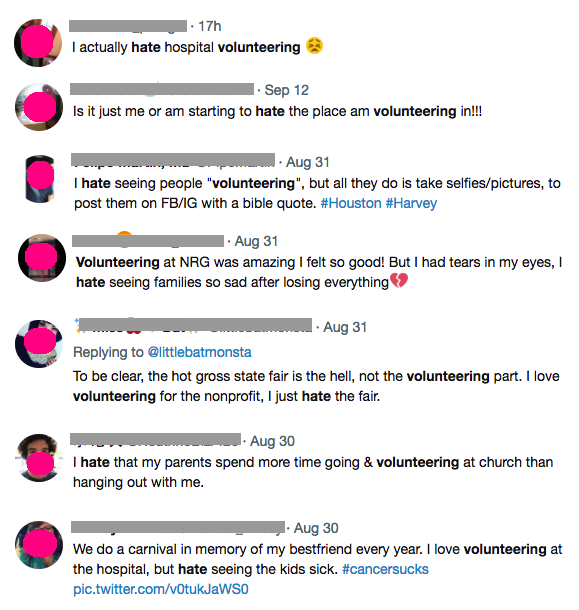 When I first started promoting the work of the Virtual Volunteering Project back in 1997, the question asked most frequently was, “How do you keep people safe from online volunteers who might be predators?”
When I first started promoting the work of the Virtual Volunteering Project back in 1997, the question asked most frequently was, “How do you keep people safe from online volunteers who might be predators?”
I took those safety concerns to heart and, for months, poured over information from the FBI and from the Center for Missing and Exploited Children at the time. I learned all I could about who harms other people, particularly children, and what situations put children at most harm. And I was stunned at what I learned: the vast majority of missing children who have been taken by someone were taken by a non-custodial parent, not a stranger. And that the vast majority of people that harm children are family members or someone known and trusted by the family.
I also researched identify theft – and was stunned to discover how often this theft is perpetrated by family members or someone else living in the house where the victim lives: using the victim’s credit card, opening credit accounts, open new bank accounts, getting loans, withdrawing funds from the victim’s bank account, using the victim’s health and/or dental insurance for their own use, claiming the victim’s government benefits as their own and filing false tax returns or claiming the victim’s tax refunds.
I revisit these subjects regularly, and in more than 20 years, the facts haven’t changed about where the dangers regarding abuse and identity theft come from. When I reference these facts regarding safety in a training, it sometimes draws gasps from the audience. I remind workshop attendees that Larry Nassar was well known to his victims, their parents and coaches and trusted by many. So was Jerry Sandusky. So are many of the clergymen facing charges related to child sexual abuse. And I ask: what policies do YOU have that would prevent this at your organization, by a volunteer, client or staff member you know and trust but aren’t observing every second during his or her service? Does your organization have a speak up culture or a culture of avoidance?
I also remind them that Big Brothers / Big Sisters brings adults and children together and that these adults and children interact far from the eyes of any staff members or family – and the organization has a stellar safety record. How does BBBS do such an incredible job regarding safety? Safety is embedded in every part of their organizational culture. They don’t just do a criminal background check: they interview candidates for volunteering, they observe them, they reference check them, they train them, they have intensive and repeated interactions with them, and they train client families about safety as well. Participants are continually reminded of safety guidelines and warning signs. They also have strict guidelines about situations mentors and children are, and are not, allowed to be in, like any situation where there would be a changing of clothes in front of each other or others, such as in a gym locker room – and participants are continually reminded of these guidelines.
None of this is to say that protecting volunteers and clients from strangers isn’t important, or that doing activities online doesn’t incur risks. But it’s a sobering reality that people, including children, are harmed by people they know and trust far more than strangers. If your risk management for volunteers or clients focuses only on strangers, you are cultivating an environment where very bad things can happen.
And for the record: I’ve been studying virtual volunteering since 1996, and still have no account of an online volunteer causing harm to an organization. If it hasn’t happened, it WILL happen, because there is no way to interact with humans, online or face-to-face, and absolutely prevent, 100%, that anything bad will happen as a results.
For more information:
This excellent article by David Finkelhor, the director of the Crimes Against Children Research Center at the University of New Hampshire
The myth of stranger danger by Heather Ryan
The Center for Identity Management and Information Protection, housed at Utica College.
August 2019 update:
In an article in Ms Magazine, Amanda Ruzicka of the Moore Center for the Prevention of Child Sexual Abuse at Johns Hopkins Bloomberg School of Public Health, said:
Research has shown that adolescents commit up to half of all child sexual abuse incidents against younger children, and that the onset of this behavior peaks at age 14.
Let that fact sink in. And consider how many nonprofits bring adolescents together with younger children, as clients or as volunteers, and don’t have this fact in mind. It does not ALL mean that these nonprofits shouldn’t bring adolescents together with younger children but, rather, that appropriate precautions need to be taken regarding adolescents being along together, let alone with children. And it’s another example of how we focus so much on stranger danger – but not on the much more common risk. And please note that the Moore Center has an excellent program to help address this risk, summarized below from the same article the same article in Ms Magazine:
We also know that most times adolescents engage in harmful sexual behaviors with younger children because of factors like the absence of adult supervision, or a lack of knowledge about appropriate sexual behaviors and how their actions can impact themselves and others—not because they are bad kids. Our Responsible Behavior with Younger Children (RBYC) program aims to provide sixth and seventh grade students with the knowledge, tools and skills they need to model healthy behaviors with younger children and their peers. RBYC focuses on what behaviors are harmful and constitute sexual harassment or child sexual abuse, the consequences of those behaviors, as well as why these behaviors are harmful and how to prevent them. Students learn about real-life scenarios when harmful sexual behaviors could take place, how to take the perspective of a younger child and how respond in a healthy and empathetic way. Other sessions highlight the developmental differences between adolescents and younger children, healthy behaviors with younger children and peers and how to be a good bystander or upstander… we focus on preventing child sexual abuse in a manner that takes the responsibility off of children to protect themselves, and instead focuses on preventing perpetration.
And remember that the Boy Scouts of America kept a file of more than 7,800 Boy Scout members that had committed sexual crimes against boys in their program – none of those predators were unknown to their victims and were often well known to the parents of their victims – no strangers. The growing number of lawsuits allege that Boy Scouts staff and volunteers were aware that the structure of the institution was a convenient landing spot for child predators and did nothing to rework the organization or protect its charges.
Also see:
- Letting Fear Prevent Volunteer Involvement is Too Risky” (a guest blog by me for Energize, Inc. and Susan Ellis)
- Have you enabled a Larry Nassar?
- Keeping volunteers safe – & keeping everyone safe with volunteers (includes a list of my favorite resources regarding safety in programs that involve volunteers and/or children; I consider many of these resources mandatory reading for managers of volunteers
- Safety in virtual volunteering
- Supervising online volunteers in court-ordered settings
- Safety of volunteers contributes to a shelter closing
- Survey for Returned Peace Corps Volunteers Re: Safety
- volunteer managers: you are NOT psychic!
- Your organization is NOT immune to sexual harassment
- Creating a Speak-up Culture in the Workplace
- Why don’t they tell? Would they at your org?
- With volunteers, see no evil?
- Fearing your own colleagues in the field
- Survey for Returned Peace Corps Volunteers Re: Safety
- Evaluation Re: Peace Corps’ Sexual Assault Risk Reduction & Response Program







